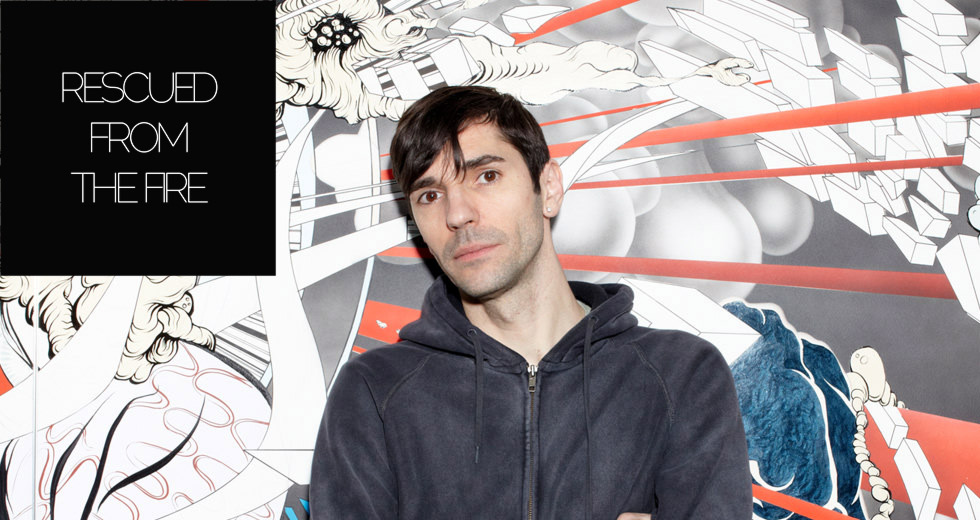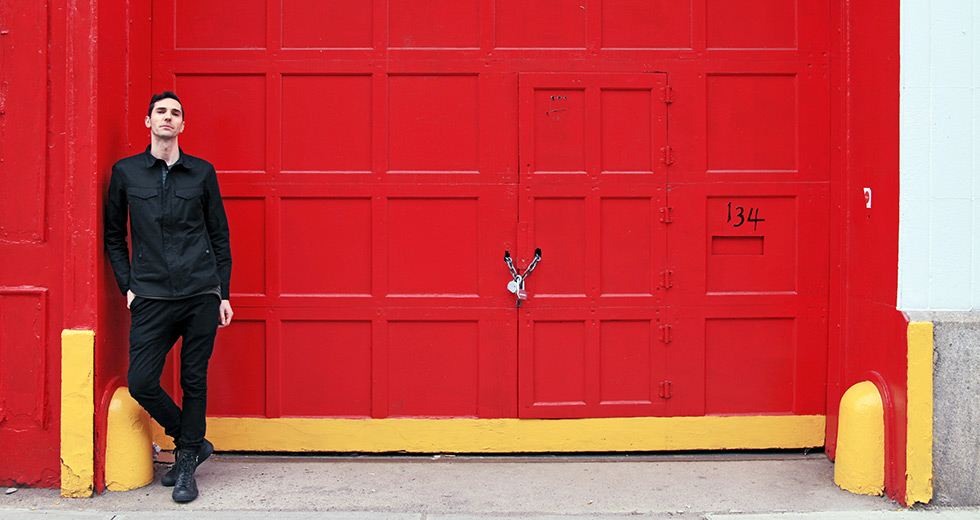Stop Making Sense: An Appreciation
Noel Murray considers how the Talking Heads concert film came to be regarded as one of the finest concert documentaries of all-time
There’s a moment about half an hour into the 1984 Talking Heads concert film Stop Making Sense when it looks like frontman David Byrne is about to collapse. Like the tour it documents, Stop Making Sense builds piece-by-piece, beginning with Byrne completely alone on a stage for the first song, “Psycho Killer,” and then adding more Heads and more scenery, song after song, until the four core members and all of the supplementary players are standing on a completed set, playing the band’s biggest hit “Burning Down the House.”
By this point, the rhythm has become relentless, and the musicians are chugging away like an express train, while Byrne jogs in place, front and center. There’s no way he can keep this up. And then “Life During Wartime” starts up, chugging even faster, and at the climax of the song, Byrne stops jogging and starts running, doing a few laps around the perimeter of the stage. It’s impossible. It’s ridiculous. It’s amazing.
Until Stop Making Sense came along, the consensus among film critics and rock critics alike was that Martin Scorsese’s 1978 picture The Last Waltz was the greatest concert film ever made. But then Scorsese didn’t have much competition at the time. The 1970s were the era when rock became big business, and the refugees from the counterculture who still controlled the pop culture press were distrustful of anything that smelled like a cash-grab.
The Last Waltz was still bound to a lot of the excesses of the ‘70s rock business, coming off at times as bloated and self-congratulatory.
When record companies tried to turn the sacred communal experience of the live gig into arena shows, double albums, and midnight movies, the old guard balked, loudly. But The Last Waltz was more acceptable, because of the musicians involved: The Band, Neil Young, Joni Mitchell, Van Morrison, and Bob Dylan. Plus, Scorsese had a respectable rep, as one of the hip young generation of directors who were changing Hollywood. The music in The Last Waltz sounds great even today, and Scorsese shot it all cinematically.
But Stop Making Sense is better.
That’s not to take anything away from The Last Waltz, which Stop Making Sense’s director Jonathan Demme has cited as one of the two main influences on his film. (The other was Neil Young’s Rust Never Sleeps, which uses a similar “build the show song-by-song” conceit.) It’s just that The Last Waltz was still bound to a lot of the excesses of the ‘70s rock business, coming off at times as bloated and self-congratulatory, prizing backstage access over what an actual fan could see. Stop Making Sense, meanwhile, is shot almost entirely from the audience’s POV.
The reasons for this differ, depending on who’s making the case. In the commentary track on the Stop Making Sense DVD and Blu-ray, Byrne says that Demme decided ahead of time to eliminate almost all of the shots of the adoring crowd, because the director didn’t want to tell anyone watching the film how to feel. The quality of the band’s performance was self-evident to Demme, and didn’t need any inserts of whooping fans to substantiate it.
According to Demme himself though, he actually did shoot footage of the crowd, on night one of Stop Making Sense’s three-night shoot at Los Angeles’ Pantages Theater. He decided not to do it again on nights two or three because he found that the combination of the bright lights and the cameras in the audience caused the spectators to freeze up, which threw off the band.
It says something about the mystique of Stop Making Sense that Demme’s work on the film feels more planned-out and controlled than it actually was. Fans can remember specific lighting effects and camera angles; and ask most of those who love Stop Making Sense to describe the movie, and they’ll mention that Demme never shows the audience until the final song, “Crosseyed and Painless,” and that the whole shoot was carefully choreographed. But actually, Demme had only a few planned shots per song, which he mapped out after watching several of the earlier shows on the tour. Otherwise, he instructed his crew to move around, and to stay open to whatever the band was doing. And as it happens, the audience is visible fairly often early in the show – seen from the stage while the band plays.
There are plenty of glitchy moments in Stop Making Sense, many of which are pointed out on the commentary track by Byrne, who jokes that he was such a dictator on that tour that he would’ve been livid about the water cup he spies in one scene, and the beach ball that heads toward the stage in another. (Byrne himself violates one of the movie’s major rules more than once, by looking directly into the camera.)
Stop Making Sense wasn’t the first Talking Heads concert to be recorded for posterity. It doesn’t take much searching on the internet to find an hourlong 1980 Talking Heads show, filmed in Rome with the expanded band that had worked on the polyrhythmic, densely textured masterpiece Remain In Light. A lot of Talking Heads fans prefer this incarnation, because it includes the one-of-a-kind prog-rock guitarist Adrian Belew, who was also featured on Remain In Light and later on the excellent 1982 live album The Name Of This Band Is Talking Heads. And it may well be that the 1980 Heads were better than the 1984 edition. The show in Rome is certainly a lot freer than Stop Making Sense. The band’s clothes are more flowing and fashionable, with no costume changes or elaborate choreography. They just play: fast and vigorous.
Some of the sounds on the soundtrack are overdubs, added later – including Byrne’s famous pre-intermission line, “Does anybody have any questions?”
But Stop Making Sense isn’t just a document of a band; it’s a film, with a structure, and with concessions made to how everything will work as a piece of cinema. In that Rome movie, the sound is muddy, and the cameras keep showing the same three or four angles. (Plus, Belew’s guitar dominates the mix too much in nearly every song, making the band less “Talking Heads” than “Talking Heads w/ Adrian Belew.”) For Stop Making Sense, Demme and the band weren’t above a little fakery. Some of the sounds on the soundtrack are overdubs, added later – including Byrne’s famous pre-intermission line, “Does anybody have any questions?” – and even in the original stage show, the band fudged some. When Byrne walks out at the beginning and presses “play” on a boombox, the percussion track actually plays from the soundboard, not from the tape on stage; and during the two-person performance of “Heaven” that follows immediately afterward, background vocalist Lynn Mabry sings the chorus from offstage.
Most of these “fixes” are invisible, but the whole design of the Stop Making Sense tour was meant to call attention to the process of putting on a big rock show. Each time the black-clad stagehands roll in a new instrument, or a new lighting rig, it changes the visual and aural dynamic of Stop Making Sense in a way that the audience recognizes far more than they would if everything were in place from the beginning. And then, post-intermission, when all the pieces are already there, Byrne and Demme still add quirky elements to differentiate each song, whether it’s the spooky lighting-from-below during “What a Day That Was” or Byrne dancing with a floor-lamp during the great love song “This Must Be the Place (Naive Melody).”
The most famous of these striking visual elements in Stop Making Sense is the “big suit.” Around the time that the movie came out, Saturday Night Live parodied Talking Heads and Byrne’s costume by having cast member Rich Hall dance around and sing a version of “Once In A Lifetime” with new lyrics: “You may ask yourself / Why such a big suit? / You may ask yourself / Can the suit be taken in a little?”
The irony of SNL making a joke of the big suit is that the suit’s already a joke – and meant to be one. On the Stop Making Sense commentary track, Byrne describes the outfit as purposefully absurd: an oversized “cage” for the “Mr. Normal” character he liked to play. To Byrne’s mind, the whole show follows a kind of arc, in which he starts out as a stiff white guy, jerking his body around to “Psycho Killer,” and ends as someone who knows how to “get loose.” Byrne may have a strange sense of humor – and a thick pretentious streak – but he always did know how to kid himself.
Byrne and bassist Tina Weymouth have the most memorable dance moves in Stop Making Sense.
Besides, when Byrne talks about getting loose, he’s not kidding. Byrne and bassist Tina Weymouth have the most memorable dance moves in Stop Making Sense. Weymouth does a little walking-in-place step, always ending with her legs locked together. During her performance of Tom Tom Club’s “Genius of Love,” she skitters across the stage like a hopping insect. Byrne meanwhile sways like a cartoon palm tree, and occasionally does little stagger-dance steps that Weymouth claims he carefully copied from Fred Astaire in Royal Wedding.
In later years, Byrne says he realized that Demme and editor Lisa Day cut Stop Making Sense so that each member of the band becomes a character in a larger story – each humanized by the little gestures or dances they do when they’re not supposed to be in the spotlight. Demme backs that up on the commentary track, saying that he had so many marvelous little grace notes to choose from that assembling Stop Making Sense was a challenge.
When in doubt though, he could always just cut back to Byrne, whose energy and grace radiate out to his bandmates. Next to Byrne’s joggercise routine during “Burning Down the House” and “Life During Wartime,” the most breathtaking moment in Stop Making Sense comes during “Once in a Lifetime,” where Demme just holds his camera on Byrne for minutes on end, without cutting away, watching the singer play the part of a blissed-out evangelist. When Demme finally does change angles, it’s to show the seamless gesture when Byrne goes from almost falling backward to rearing forward and grabbing his microphone off the stand, in one smooth gesture. Here’s Byrne, dressed like a nerd, executing one of the coolest, smoothest moves imaginable. And contrary to the title of the movie, it all makes sense.
This feature is part of a week of articles guest curated by 3024 label boss Martyn.
“When I was young, my dad used to have Talking Heads records in his collection. The Stop Making Sense album was one that intrigued me immensely. I think it came out in 1984, so I was ten years old. Basically I was just going through my dad's collection and listening to stuff, and this album came with a book as well which had photos of the movie.
I was a big fan of David Byrne, and I was also a fan of the suit and the fashion in the movie. I even went as far as going to the hairdresser with the booklet from Stop Making Sense to show the guy. ‘I want my hair exactly like Davie Byrne in the movie.’ Everyone else at that time was going hard on Madonna, Prince, Michael Jackson and all that stuff, and I was walking to the hairdresser with a Stop Making Sense booklet.”
To check out more of the features that Martyn picked out, check out his guest curator hub page.

